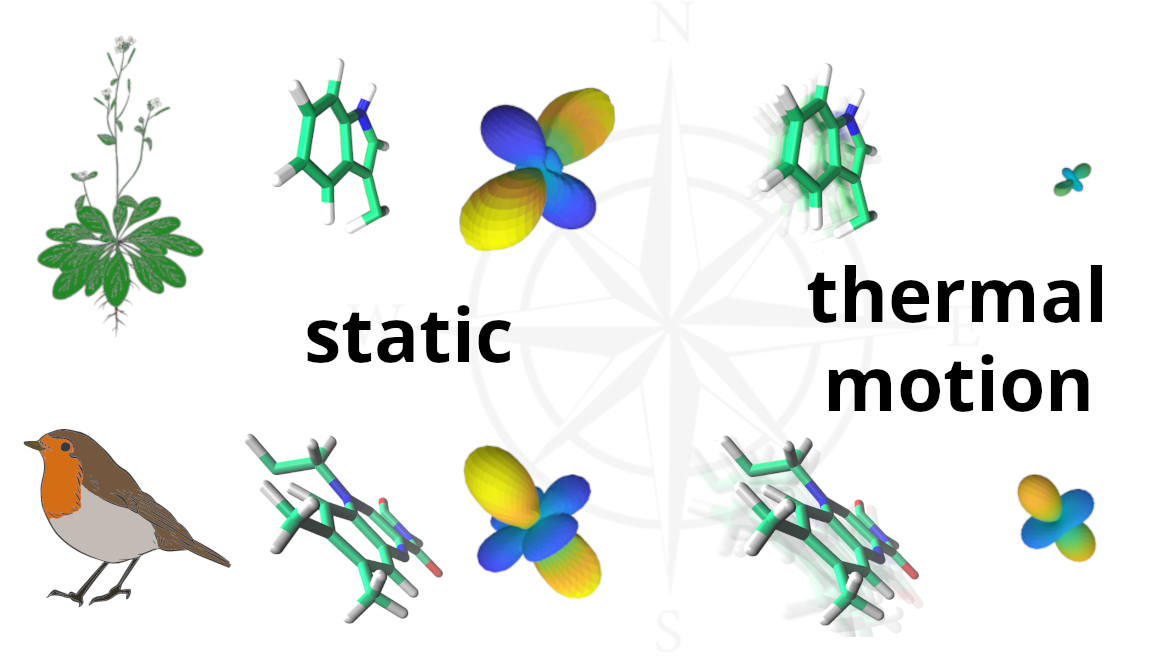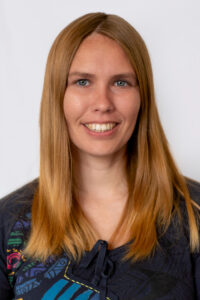How does intra-protein motion influence protein function? Cryptochrome magnetoreception and cryptophyte light-harvesting

TIME: 1:00pm
WHEN: 23 July, 2025
LOCATION: Zoom
TIMEZONE: AEST
Join us for this QUBIC Seminar Series event.
How does intra-protein motion influence protein function? Cryptochrome magnetoreception and cryptophyte light-harvesting
 Speaker: Dr Gesa Grüning, UNSW
Speaker: Dr Gesa Grüning, UNSW
Date: Wednesday 23 July, 1pm – 2pm AEST
Zoom: Click here to join the seminar
Abstract
Thermal motion is ever-present in proteins at biological temperatures. How do those structural fluctuations influences quantum biological functions, particularly those sensitive to changes in the relative orientation of protein parts and to the speed of intra-protein motion?
To quantify the impact of thermal motion, we developed a multi-scale computational approach combining all-atom molecular dynamics (MD) simulations, density functional theory (DFT)-based calculations, and Bloch–Redfield-Wangness spin dynamics for relevant protein parts involved in chemical reactions.
We previously studied the effects of thermal motion on the magnetic compass mechanism in migratory birds, which is thought to rely on a radical pair in cryptochrome photoreceptors. For the associated chemical reaction product to be influenced by the Earth’s magnetic field, the radical pair must stay sufficiently long in a non-equilibrium coherent state, which is vulnerable to spin relaxation driven by thermal motion. Through analysis of cryptochrome dynamics, we quantified how various degrees of freedom affect the coherence lifetime of the radical pair, which influences the sensitivity of the bird’s magnetic compass.
In a new project, we are investigating the role of thermal motion in exciton transfer within the light-harvesting system of single-celled algae called cryptophytes. X-ray crystallography and cryo-EM are used to obtain the structures of phycobiliproteins in the antenna complex and of the light-harvesting system. The structures will then be used in MD simulations and quantum chemical calculations to understand how thermal motion affects exciton transfer dynamics in the system.
Bio
Gesa Grüning is a biophysicist and Human Frontier Science Program Fellow at the University of New South Wales, Sydney. Currently, her research is centred on quantum biology and cryptophyte light harvesting. During her PhD studies at the University of Oldenburg in Germany, she used computational tools such as molecular dynamics simulations and quantum chemical calculations to investigate magnetoreception in birds. In particular, she investigated the role of thermal motion on cryptochrome based compass sense. In her current research, she is using similar computational tools to investigate quantum physical properties arising from the structure and dynamics of the antenna proteins used in the light-harvesting process in cryptophytes. Additionally, she is using cryo-electron microscopy to determine the ultra-structure of the antenna and the attached photosystem II.
View all events